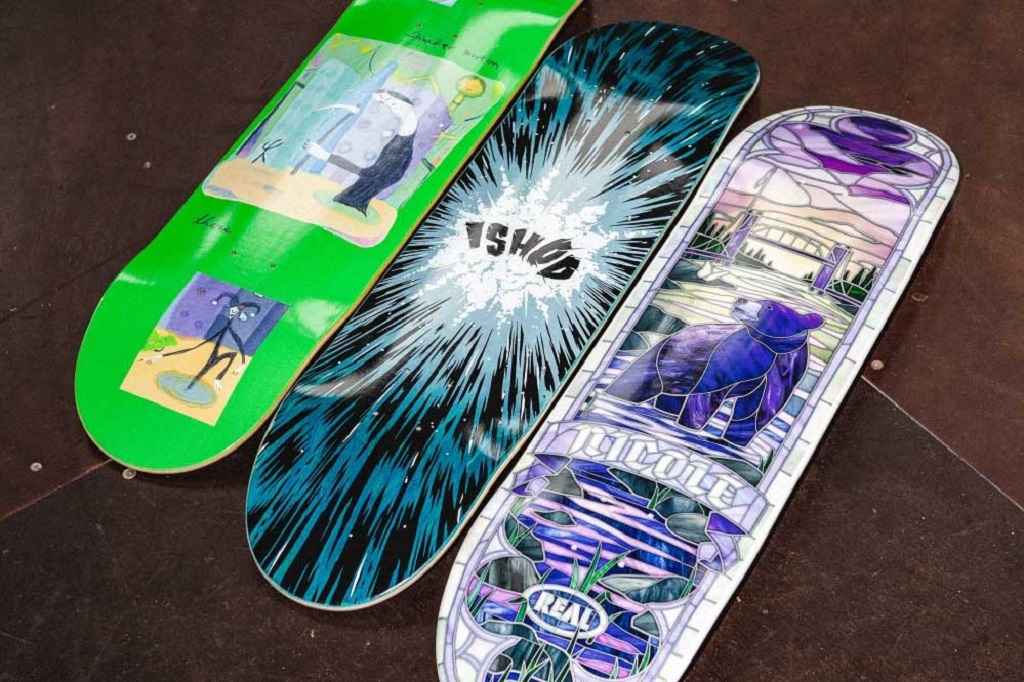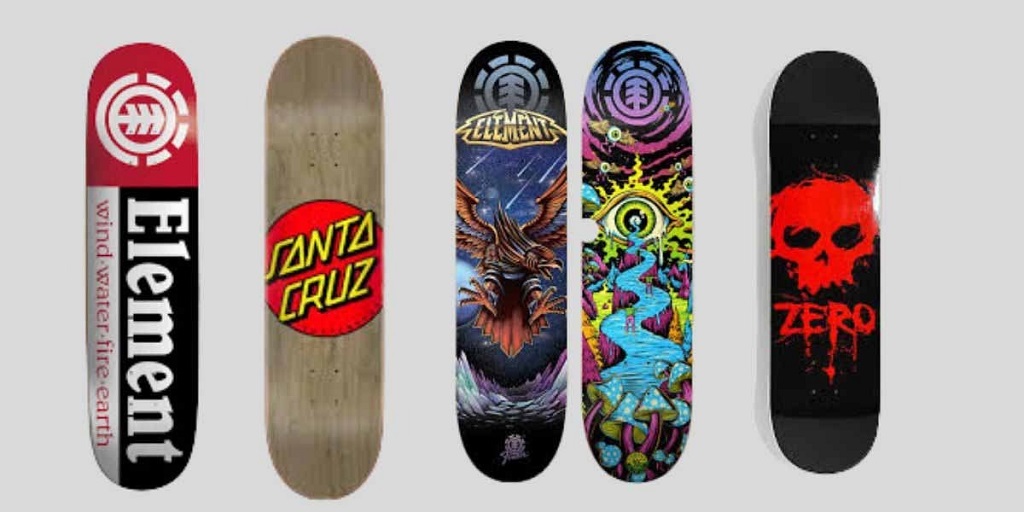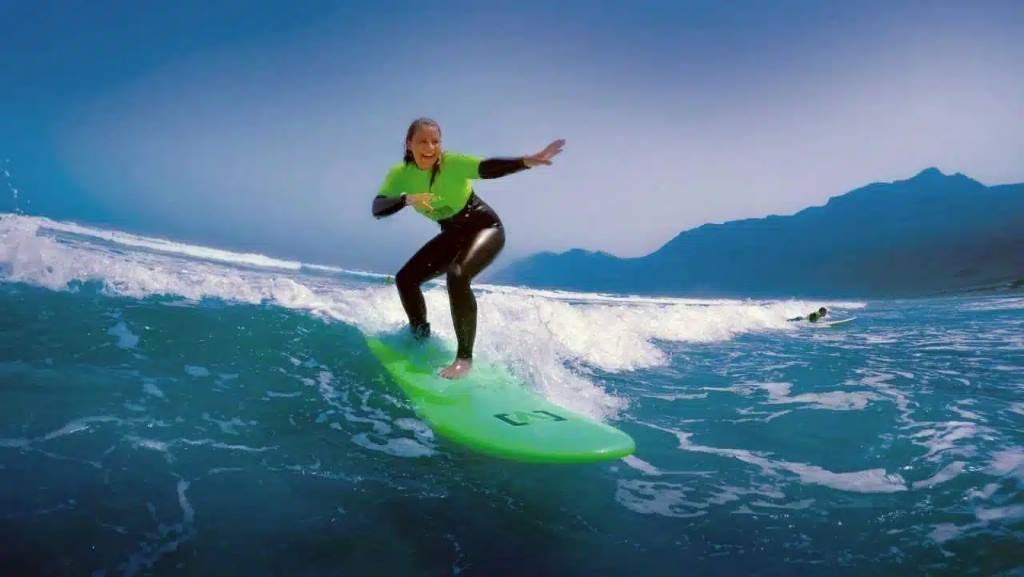Real Skateboards has earned a loyal following for durable construction, thoughtful shapes, and graphics that age well. If you’re weighing a fresh setup or eyeing a signature board from your favorite skater, this price guide breaks down what you can expect to pay in 2025 and why some decks cost more than others. You’ll also find tips on choosing the right size, where to buy safely, and a quick comparison to other major brands.
Quick note: Prices below reflect common U.S. retail ranges for the deck only (no trucks, wheels, or bearings). Shops run promos, so you may see sale pricing that dips under the ranges listed.
About Real Skateboards
Founded under the Deluxe Distribution umbrella in San Francisco, Real has been part of the scene for decades. The brand is known for strong teams and a consistent focus on board feel and longevity. You’ll often see Real decks under street and park skaters who want stable shapes with predictable pop. Deluxe’s experience in pressing and quality control helps Real keep construction tight across standard, team, and pro model releases.
Types of Real Skateboard Decks
Standard Decks
These are the no-frills workhorses. Same high-quality wood and pressing as the pro boards, just without a specific rider’s name attached. Graphics are classic Real fare: bold logos, clean lines, and seasonal variations.
Pro Models
Signature graphics tied to Real pro skaters. You’ll typically see shapes that match what the pro actually rides, plus graphic details or special veneers. Functionally, they’re built to the same standards as standard decks, but the artwork and association add demand.
Team Boards
Team boards sit between standard and pro: they carry team-inspired art and, at times, shapes favored across the roster. They’re great if you want a Real deck with a graphic that nods to the crew without being a single rider’s model.
Collaboration & Limited Editions
Occasional collabs with artists, shops, or events bring unique graphics, special stains, or premium print methods. These often arrive in smaller batches and can sell through quickly, which affects price and resale value.
Price Overview (2025)
Below is a general snapshot of what you’ll see at reputable skate shops and trusted online retailers in 2025. Again, holiday sales and shop promos can nudge these figures up or down.
| Deck Type | Typical Widths | What You Get | Average Price (USD) | Who It’s For |
|---|---|---|---|---|
| Standard | 7.75″–8.5″ | Classic Real shapes, staple graphics, 7-ply maple | $65–$75 | All-around skaters wanting value and consistency |
| Pro Model | 8.0″–8.5″ (common) | Signature graphics, pro-preferred shapes | $75–$90 | Fans of specific riders; gift-worthy graphics |
| Team Boards | 8.0″–8.6″ | Team-themed art; sometimes limited runs | $70–$85 | Riders who like team designs without a single pro |
| Limited/Collab | Varies | Special art, stains, or print processes | $90–$120+ | Collectors and skaters who want something rare |
What Affects the Price
- Construction & Materials. Most Real decks use 7-ply North American maple pressed with reliable glues. Any special layup, veneer, or reinforcement can push price upward.
- Graphics & Licensing. Pro signatures, artist collabs, metallic inks, or embossed finishes add cost.
- Release Size. Smaller batches are pricier to produce and sell through faster.
- Demand & Resale. Hype around a rider, tour, or video part can raise demand for certain graphics or sizes.
- Shop Economics. Independent shops set final prices, and regional shipping or import duties can influence the sticker.
Real Pro Models: Popular Picks
Real’s pro lineup is stacked. You’ll typically find signatures from skaters like Ishod Wair, Dennis Busenitz, and Chima Ferguson, among others. While shapes inevitably rotate, the following themes hold:
- Ishod Wair: Street-ready shapes with widths around the sweet spot for ledges, flatground, and park. Expect steady pop and medium concave.
- Dennis Busenitz: Stable feel with fast, nimble control that suits tech lines and quick flicks.
- Chima Ferguson: Shapes that hold up when you’re going bigger and faster, with a reassuring platform underfoot.
These pro boards often price a notch above standards because of graphics, rider royalties, and demand. If you love a certain skater’s style, paying a small premium to support their work and ride their preferred shape makes sense.
Where to Buy Real Skateboards
- Your Local Skate Shop: Best place for size advice and immediate support. Shops often match legitimate online pricing and can grip your deck on the spot.
- Trusted Online Skate Retailers: Look for established shops with strong customer reviews and clear return policies. Many post width charts and profile measurements.
- Official Brand Channels: You can browse current graphics and team info on the official Real and Deluxe sites.
How to avoid counterfeits: Stick to recognized skate shops and official channels. Be wary of marketplaces with unusually low prices, blurry product photos, or missing shrink wrap and sizing details.
Choosing the Right Real Deck

Width & Fit
- 7.75″–8.0″: Quick, flippy boards for smaller skaters or tech-heavy street.
- 8.0″–8.25″: The all-around zone. Stable for parks and ledges while staying agile.
- 8.25″–8.5″: More platform for big gaps, bowls, and transition. Great if you prefer a steadier landing surface.
Shape & Concave
Real’s shapes tend to feel familiar out of the box. If you like medium concave with dependable pop, their staple molds hit the mark. If you’re switching from a much steeper or flatter brand, give yourself a few sessions to adjust to the new flick point.
Durability Tips
- Keep your setup away from standing water and extreme heat (like a hot car). Moisture and temperature swings shorten deck life.
- Change hardware periodically so stripped bolts don’t crush the plies around truck holes.
- If you’re snapping boards often, consider stepping up width or avoiding razor-thin wheelbases for bigger drops.
Price Comparison: Real vs. Other Brands
In 2025, Real’s pricing is right in the pocket with other top core brands. Basic logo decks from major labels usually fall in the $60–$80 zone, while pro and limited graphics commonly sit in the $75–$110+ range. Real is not the cheapest brand in the shop, but you’re paying for a consistent press, graphics that hold up, and proven shapes. If you want predictable feel and a board that won’t surprise you mid-line, the value is there.
How to Stretch Your Budget
- Hunt Last Season’s Graphics: When new drops land, older colorways often go on sale.
- Bundles: Some shops discount grip or hardware when you buy a deck.
- Local Shop Loyalty: Many stores run punch cards or member discounts—ask.
- Watch Sizing: Odd widths (like 8.06″ or 8.38″) can linger and get discounted.
Recommended Buying Workflow
- Decide your width range based on where you skate most (street, park, or transition).
- Pick a deck type that matches your budget (standard vs. pro vs. collab).
- Check two or three trusted retailers and your local shop for availability and price.
- Confirm the wheelbase if you’re particular about stance feel.
- Look for a grip add-on or bundle savings before checkout.
FAQ: Real Skateboards
Are Real decks beginner-friendly?
Yes. A standard 8.0″–8.25″ Real deck is a great starting point. The shapes are predictable, which helps with learning basic control and foot placement.
How long does a Real deck usually last?
It depends on how and where you skate. For regular street or park skating, most riders get 1–3 months before noticeable loss of pop or chips. Transition skaters who avoid heavy impacts can stretch that longer. Water, heat, and repeated drops shorten deck life.
Do Real pro decks perform differently from team or standard decks?
Performance differences are subtle. All use similar quality control, so the big change is shape preference and graphics. If you like a specific pro’s feel or want to support them, go for the pro graphic. If you’re stretching budget, a standard or team board will skate just as well.
What’s the best Real deck for street skating?
An 8.0″–8.125″ deck with medium concave is a common street pick. If you skate more ledges and manuals, a slightly narrower board can feel quicker. For stair sets and rails, consider bumping up to 8.25″ for a steadier platform.
Is it worth paying extra for limited or collaboration graphics?
Functionally, not necessary. But if a graphic motivates you to skate more or you’re collecting, paying extra can make sense. Limited runs sometimes hold resale value, but buy to skate first and collect second.
Can I save money by buying shop decks instead?
Shop decks can be a solid deal, often pressed in the same facilities as bigger brands. If budget is tight, try a shop deck first and upgrade to a Real pro graphic once you know your preferred width and wheelbase.
What trucks and wheels pair well with Real decks?
Match truck axle width to your deck width (e.g., 8.0″ deck ≈ 8.0″ axle). For wheels, 52–54mm is a versatile range for street and park. If you skate rough ground, consider slightly softer durometer or 54–56mm for speed.
How do I know the deck isn’t fake?
Buy from reputable skate shops and well-known online retailers. Check for clean shrink wrap, proper size labels, and crisp printing. If a deal looks too good to be true from an unknown seller, it probably is.
Read More Also: Lasting Power of Attorney last
Final Thoughts
If you want a deck that feels right on day one and keeps its snap through repeated sessions, Real is a safe bet. Standard boards deliver strong value, pro models let you support your favorite skaters, and limited graphics scratch the collector itch. Start with width and wheelbase, pick art you’ll be stoked to skate, and shop with trusted retailers to get the best price.



